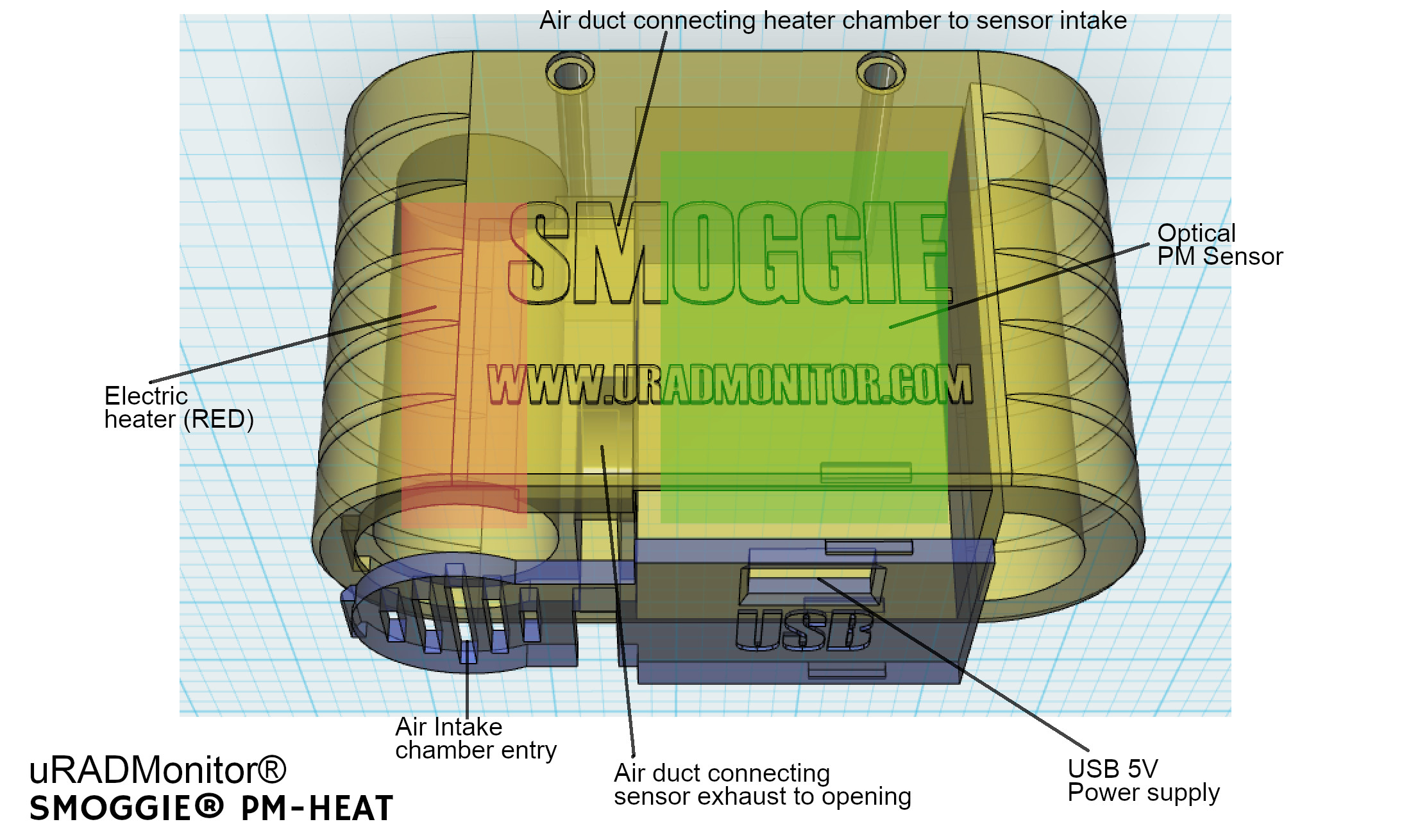
Advances in optical particulate matter sensors have opened the door for the existence of air quality monitoring networks using low cost sensors. The reduced cost allowed the spread of thousands of IOT automatic sensors, offering an unprecedented spatial resolution, the so called “hyperlocal air quality monitoring”. While signifiant technical advances have been made to offer reliable measurements of particulate matter using optical means, there are still certain situations when data quality remains questionable, especially in cases of high humidity and low temperatures, where the atomised water particles are counted as fine dust, leading to increased readings and false positives.
Principle of operation
The light scattering particulate matter sensor uses a collimated beam of light that back scatters from any dust particle entering the sensor chamber. The reflections are registered by a photodiode that we use to count the pulses and their amplitudes.

A laser light source illuminates a particle as it is pulled through the detection chamber inside the sensor. The scattered light (reflection) is recorded on the light detector. This mechanism offers information on pulse frequency, related to number of particles (the concentration) and pulse amplitude (correlated with particle size).
The immediate drawback is that there is no information on the nature of the particles entering the sensor. Some particles might be bigger but less reflective to the laser’s wavelength, others the opposite – small but very shiny. This missing part introduces a degree of uncertainty, that affects the reliability of the measurements.
For instance, we consider fine dust as a source of air quality degradation, a cause of premature deaths across the world and a health issue impacting vulnerable categories. The optical sensors will measure the fine dust , but in some cases, will have an exaggerated response when the environment humidity is high. Water vapours, sticking to dust particles will make them seem bigger to an optical dust sensor. The sensor will show elevated values of particulate matter pollution simply because the air humidity has increased. Also, when humidity is high but the temperature is very low, as it happens during cold winters, the water will form atomised droplets (mist) that the optical sensors will count as fine dust , leading to false positives.
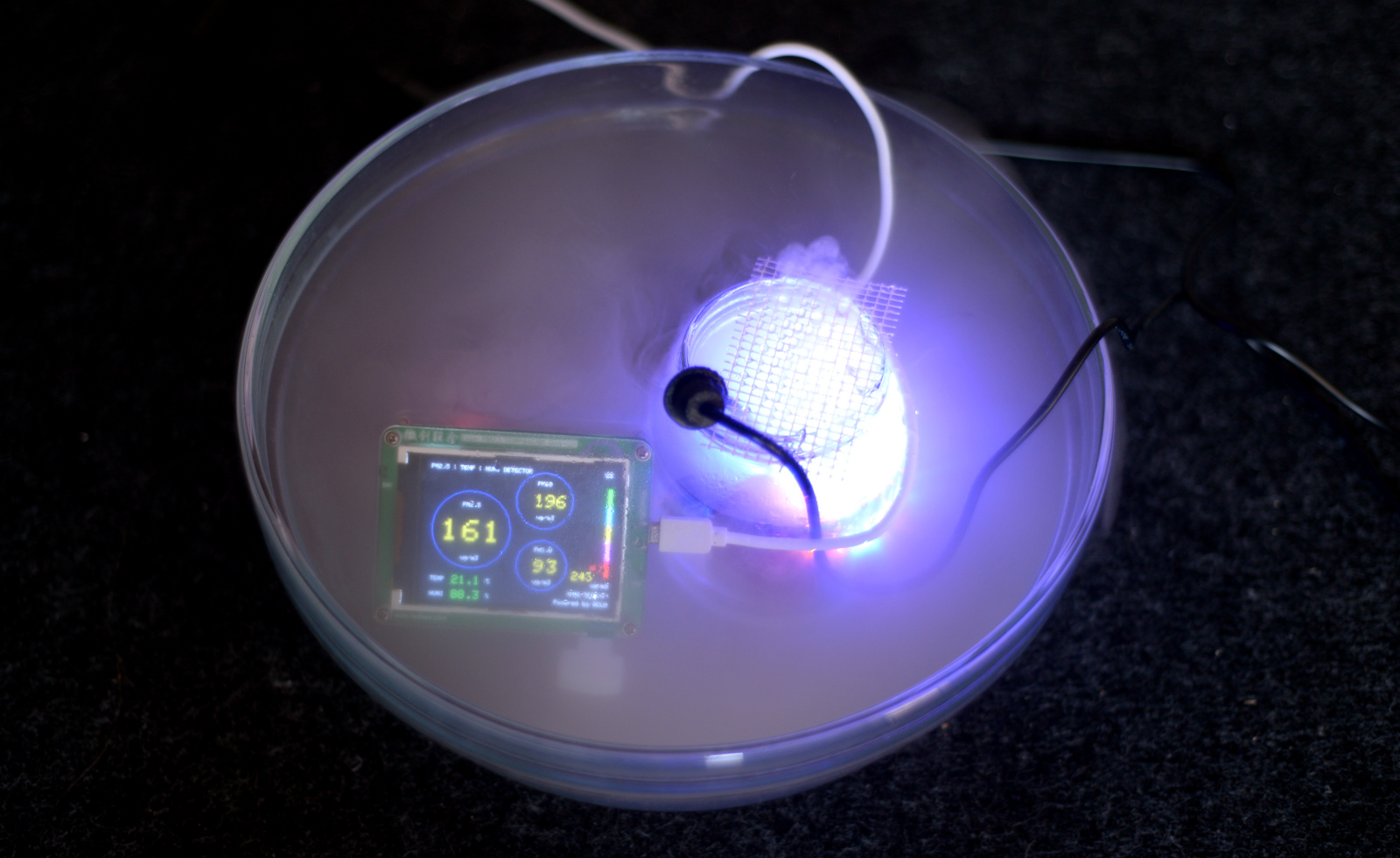
A low cost mechanism to improve Particulate Matter Optical Sensor response in high humidity
The demonstrated problem of false positives on optical laser scattering sensors caused by high humidity manifests in particular for cases of atomised water. In Winter months, the high humidity combined with low temperatures is the main cause of the aberant readings and not the high humidity alone. The water vapours might stick to small particles making augmenting the resulting response in sensors, yet this is only a minor phenomenon . In many cases, optical sensor can produce very accurate readings when humidity is as high as 80%. On the other hand, small water droplets in the form of atomised water, like the one produced by an ultrasonic transducer or like natural mist during cold winter months, will increase the response of an optical particulate matter sensor dramatically.
Regardless of which of the two directions affects a particular optical sensor, it is obvious that if we are to correct the behaviour, we need to control the air humidity at the sensor intake. With this in mind, we opted for a modification of our award Winning “uRADMonitor SMOGGIE” PM sensor. This design was selected for two reasons: it is #opensource, and any improvements can be distributed to the community in a time efficient manner, and second, it is a very low cost unit, meaning it fits the original “low cost” requirement of the proposed method.
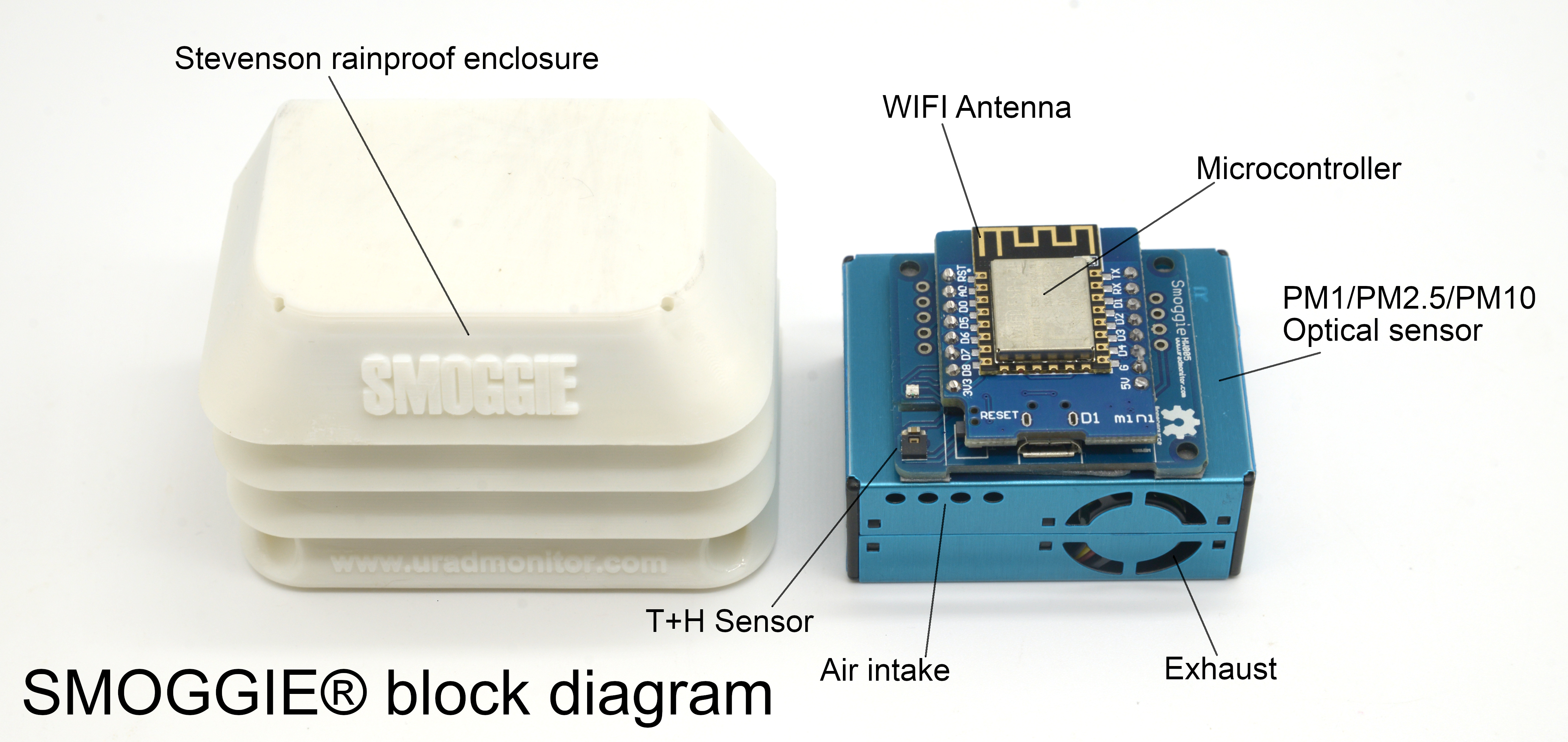
The sensor enclosure was reworked to change the air intake channel. A 5V heater was added to raise air temperature to about 60 degrees before entering the optical sensor intake. This works as a drier, keeping the humidity constant regardless of the environmental conditions.

The unit remains very compact in size, while the power consumption increased with just 1W due to the extra power needed for the heater.
Experimental data and comparisons
The regular SMOGGIE and SMOGGIE-PM-HEAT were placed side by side for the first tests, in a cold and misty winter month with their data reporting set to 1minute, to generate high resolution Particulate Matter readings. Temperature and Humidity were also registered by both units:
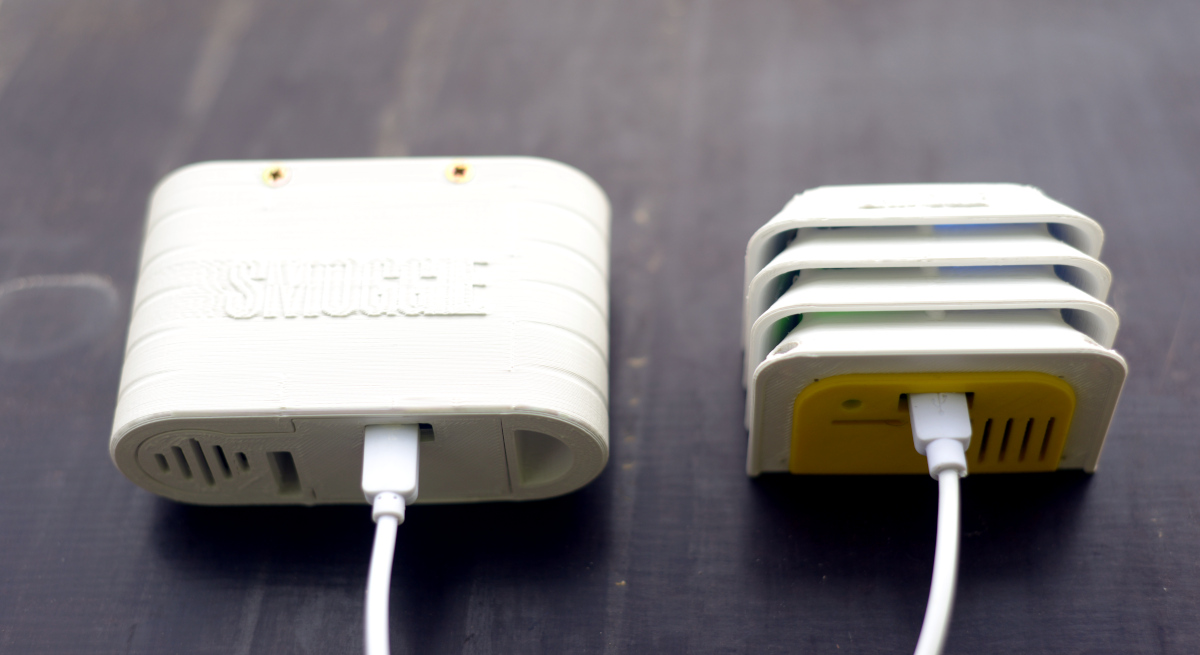
The results came in instantly and we followed the readings for a longer time interval. Temperature was close to freezing, while humidity was close to the top limit, the perfect conditions for forming small water droplets.

Humidity readings on both units:
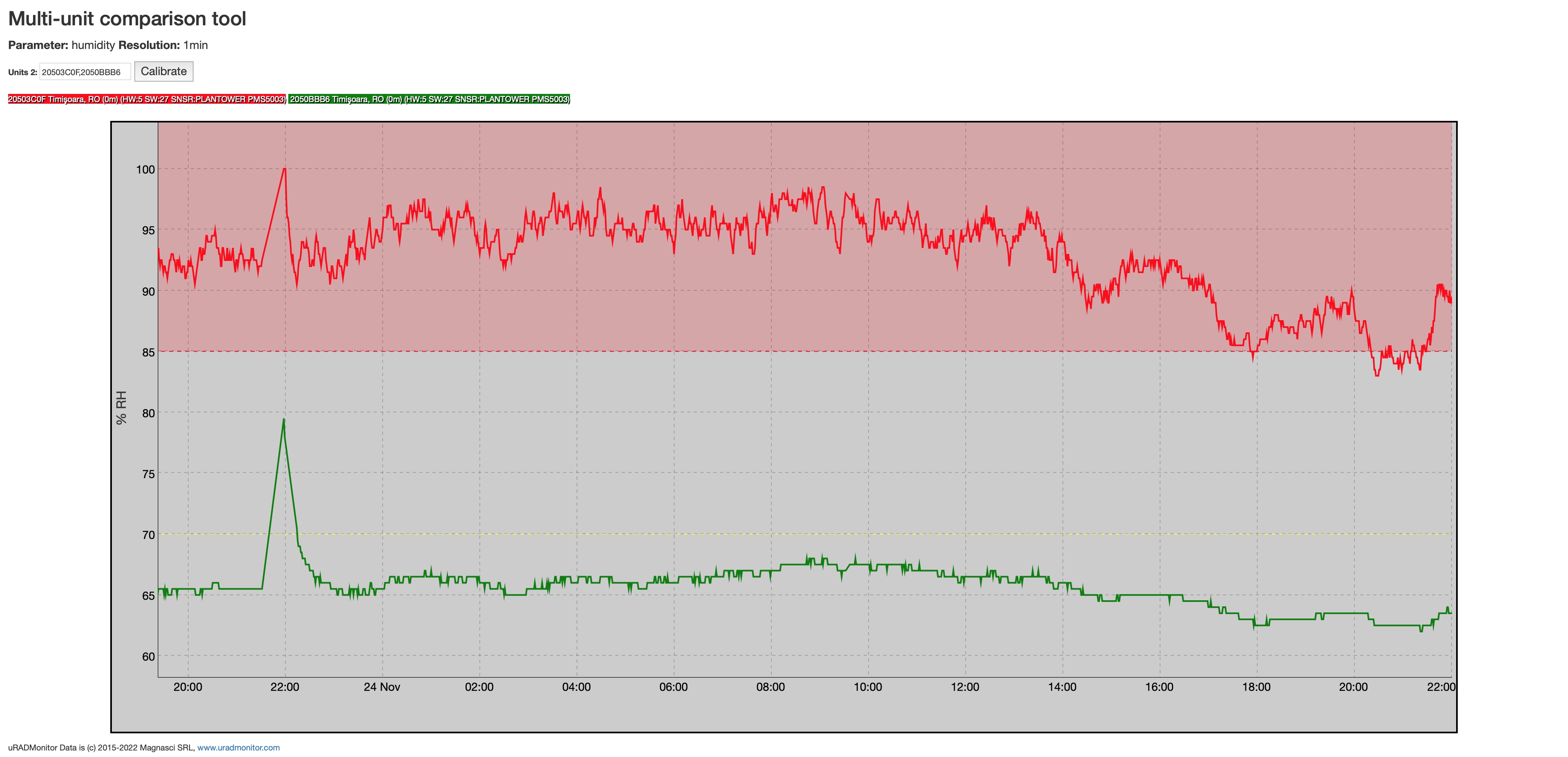
Particulate Matter readings:
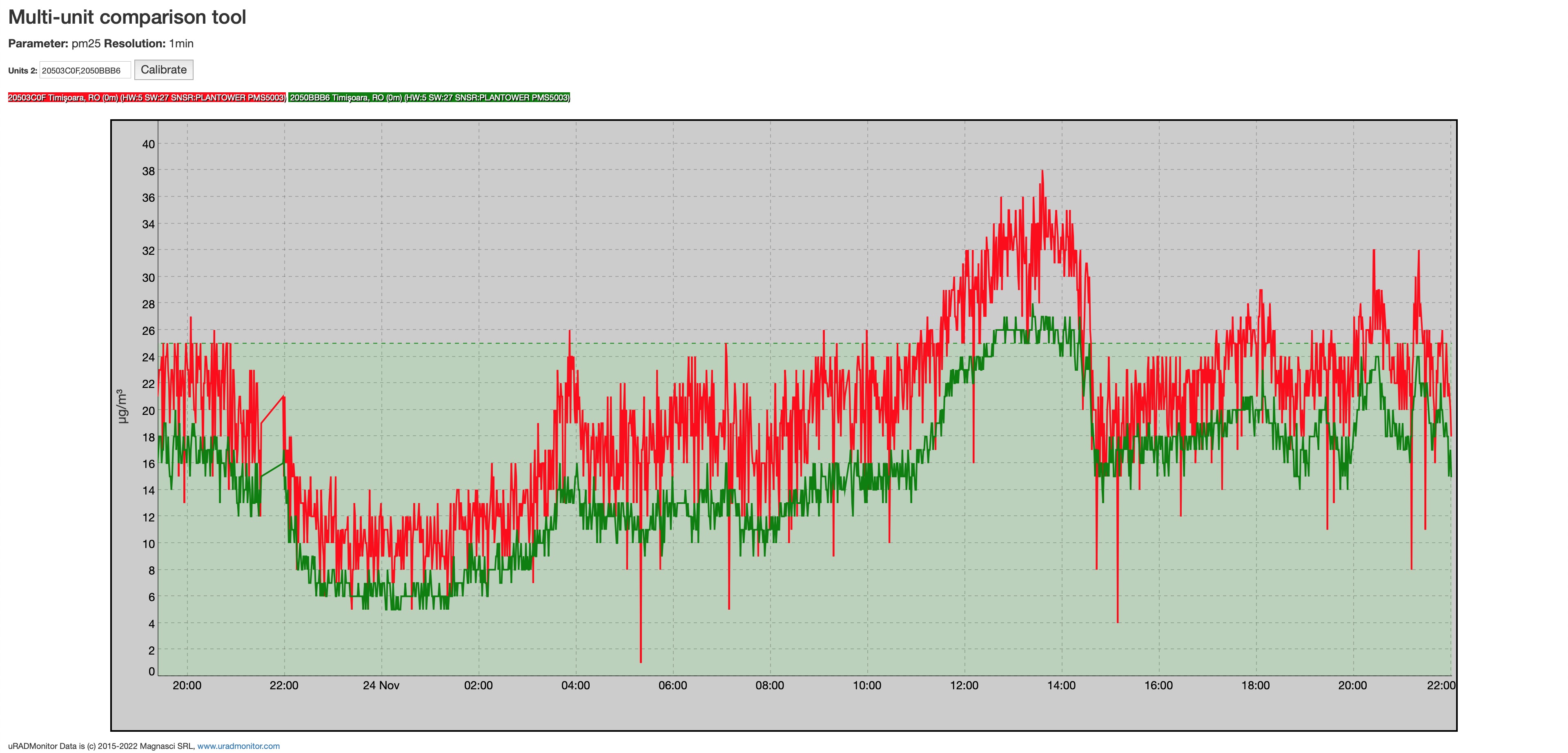
Third party verifications
Smoggie-PM-HEAT was designed specifically for the AIRPARIF AIRLAB 2023 . This 4th edition of the International sensor competition introduced a new testing site in Thailand, managed under the authority of Thailand’s National Institute of Metrology (NIMT). Airparif proposed to study the impact of new parameters on the performance of microsensors, and more particularly: higher pollution levels; different emission profiles; and different weather conditions, including higher temperatures and humidity. To improve the uRADMonitor sensor performance in the high humidity environment of Thailand, the uRADMonitor SMOGGIE-PM-HEAT was designed and built, following our initial promising findings presented in this article.

The AIRLAB evaluation report is available online (select SMOGGIE-PM-HEAT form the list) or can be downloaded as a PDF here.
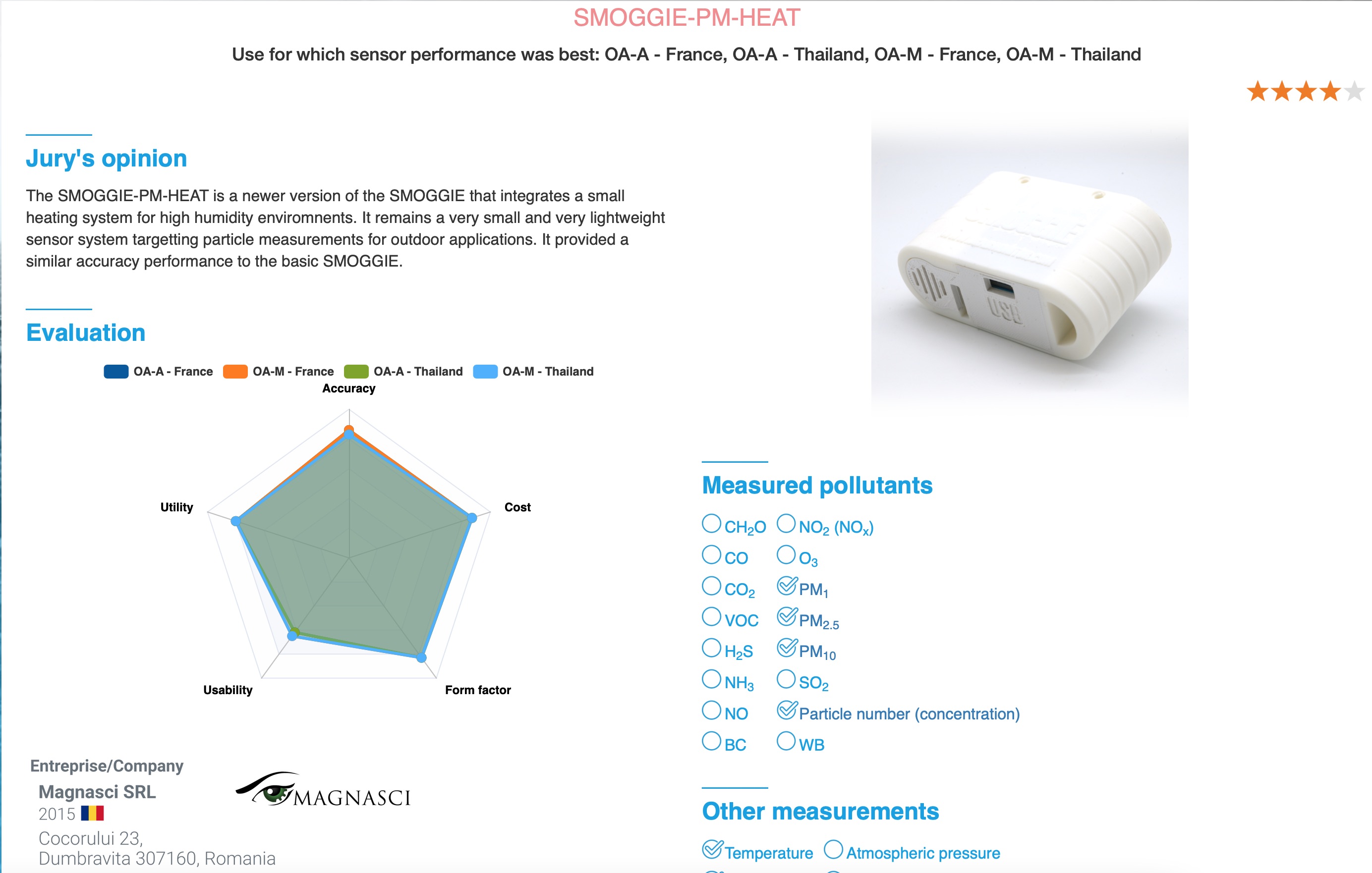
Jury’s opinion: The SMOGGIE-PM-HEAT is a newer version of the SMOGGIE that integrates a small heating system for high humidity enviromnents. It remains a very small and very lightweight sensor system targetting particle measurements for outdoor applications. It provided a similar accuracy performance to the basic SMOGGIE.
uRADMonitor SMOGGIE was one of the Winners of AIRLAB 2023, while the performance of SMOGGIE-PM-HEAT followed shortly. Official announcement is here.
Conclusions
The data shows the humidity compensation works flawlessly, confirming the successful design of the Smoggie-PM-HEAT.
With a simple hardware modification the humidity can be controlled, while the entire device remains a compact sensor in the same low cost category like the original Smoggie. The humidity control affected the Particulate Matter readings in the predicted way: the particulate matter readings are lower on the SMOGGIE-PM-HEAT, when placed side by side with the uncompensated SMOGGIE in a high Humidity environment. This demonstrates an effective way of correcting PM sensor overestimation of optical sensors in high humidity environmental.
The complete SMOGGIE-PM-HEAT technical datasheet is available here. See this document for more data and longer measurement checks.
codemore code
~~~~